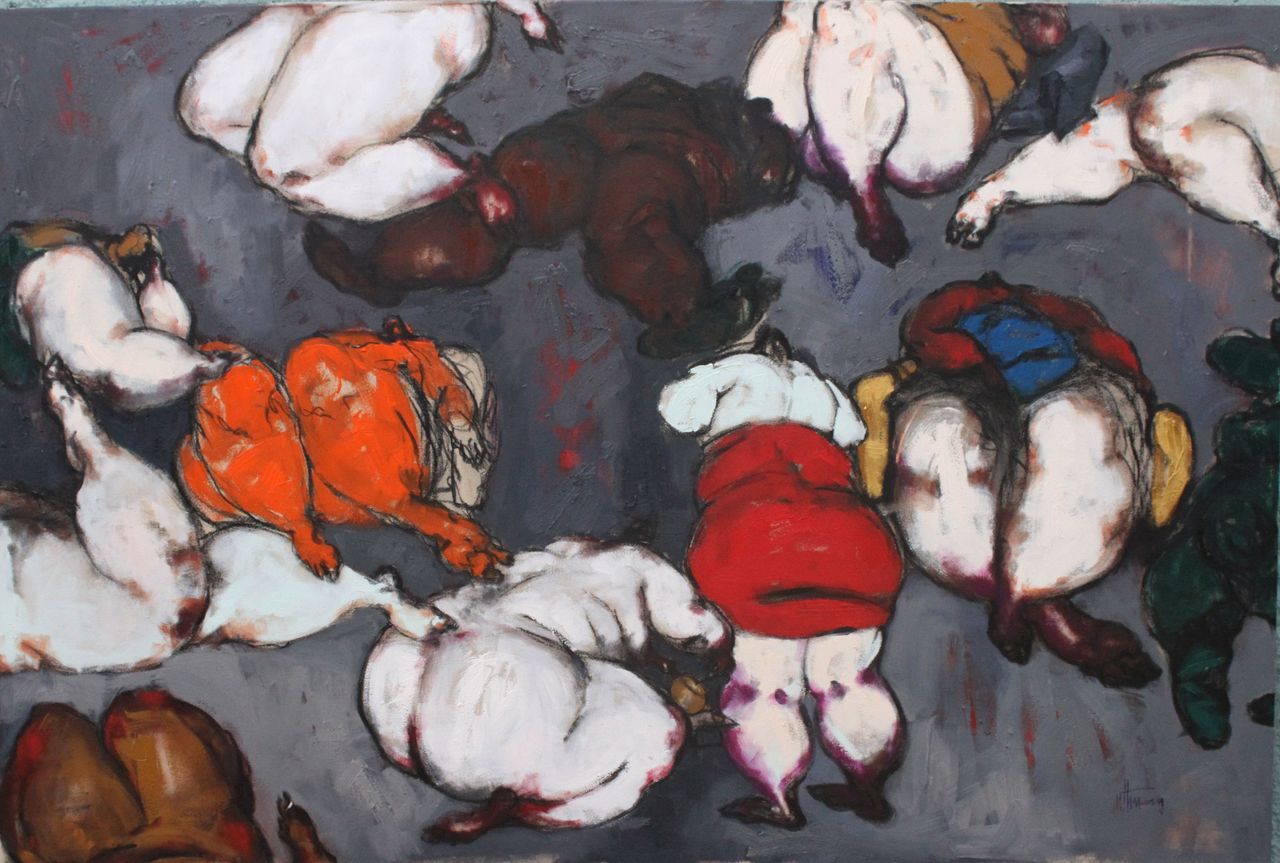When male artists paint female bodies, viewers often look to the painted woman’s gaze as a way to discern the artist’s point of view. In Botticelli’s “The Birth of Venus,” the nude goddess smiles slightly while averting her eyes just so, avoiding a true confrontation with the viewer. On the other hand, Manet’s “Olympia” ruffled feathers for depicting a subject who stared brazenly back at the viewer, demanding that if she was being seen, the viewer was, too.
In Nigerian artist Uthman Wahaab’s drawings, his undressed subjects avoid locking eyes with the viewer to such an extent that their heads appear shrunken, almost scratched out. In Wahaab’s images, it’s the bodies that demand attention: plump, luxuriant, fleshy forms that don’t care who’s looking.
Lagos-based Wahaab, born in 1983 in Ilorin, Nigeria, grew up with a culture that glorified big bodies, in which weight was associated with affluence, health and comfort. “There is a tradition of brides-to-be really preparing for their wedding by eating all the time,” Jasmine Wahi, the curator behind Wahaab’s upcoming exhibition in New York City, told HuffPost. “Plumping up was a way of taking care of yourself, of being pampered. Being larger came with a certain social status.”
Recently, however, Western beauty norms have permeated Nigerian consciousness thanks, in part, to the rise of social media. Women’s perceptions of their own bodies have shifted as the West’s obsession with being thin has encroached.

In Wahaab’s drawings, made from conte, ink, pastel and graphite on paper, fat women wallow in various states of undress. Some watch TV or diddle on an iPhone, others sip a cup of tea or have a snack. All are relaxed, at ease, palpably comfortable in their own skin. As Wahi wrote in an essay accompanying the exhibition: “This sense of quietude that flavors the works should not be interpreted as a portrayal of laziness; but rather, with luxury and beauty.”
Artists Jenny Saville and Lucian Freud are known for adapting fat bodies into paint. Yet both are transfixed by the texture of flesh, the way it catches light and shadow, becoming almost meat-like in its representation. Wahaab replaces sensual curiosity with exalting commemoration, depicting women’s bodies as more than just bodies.
“The series was inspired by someone who he knew,” Wahi explained. “To my understanding, he basically went out on a date with this woman and was struck by how under-confident and closed off she was. She admitted to him it was because she was self-conscious about her size. He then started doing this work around the stigma of ‘different bodies’ that aren’t actually that different.”
It’s been years since Wahaab, who is now married, met the woman who inspired the series; they didn’t keep in touch and she likely remains unaware of the effect she had on him. The women pictured on Wahaab’s canvasses spring straight from his imagination rather than reality. Their body parts bulge and roll with exaggerated gusto, allowing the viewer to linger on the rounded glory of a thigh or elbow. The smallest features, aside from the heads, are the petite hands and feet, which Wahi reads as a tribute to the gracefulness of Wahaab’s imagined subjects.
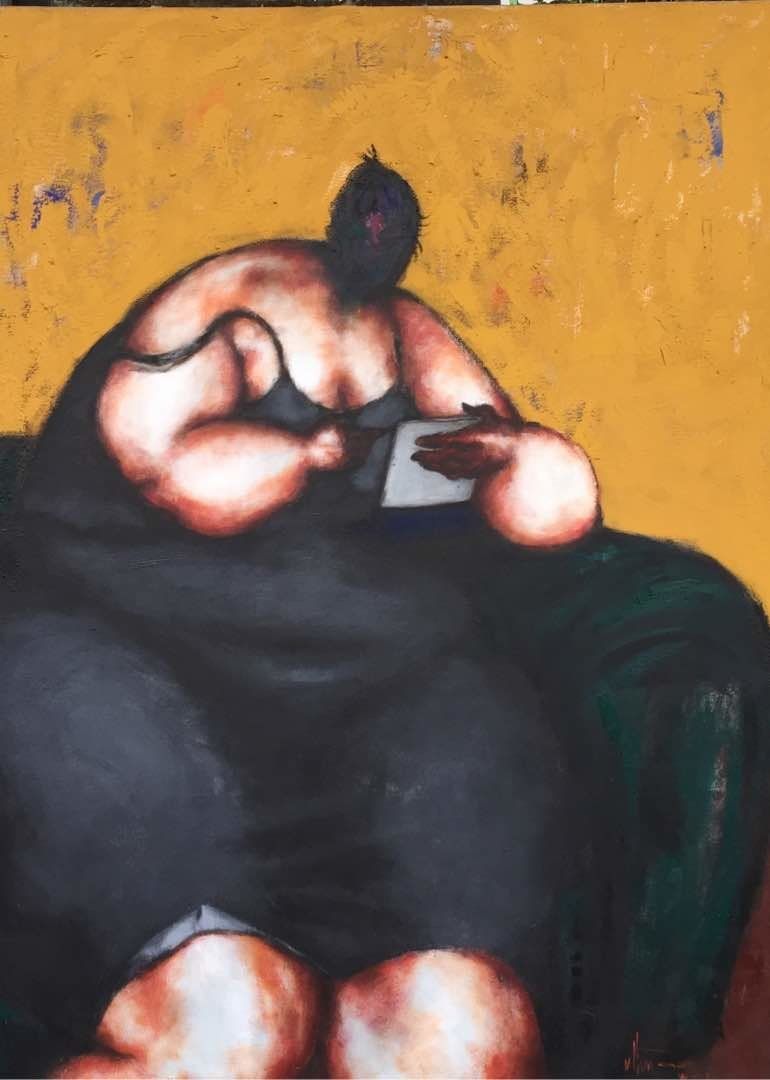
While familiarizing herself with Wahaab’s work, Wahi said she was somewhat surprised to learn that he was a practicing Muslim. Having previously worked with Muslim artists like Hiba Schahbaz, Wahi expected Wahaab to have experienced a tension between the tenets of Islam and a career in nude painting. “My automatic assumption was that in painting nudes he was doing something revolutionary or rebellious,” Wahi recalled. “But actually he’s not.”
Through her interactions with Wahaab, Wahi learned that some of the stigmas and taboos prominent in Pakistan, where Schabaz is from, don’t apply globally. “It sort of spoke to my own naivety or ignorance or just biased understanding,” she said. “It made me examine the way we perceive Muslim artists, when these customs aren’t globally pervasive.”
Wahi’s realization about her own preconceptions of global sameness overlaps somewhat with the themes explored in Wahaab’s work. Which traditions and conventions spread via technology, globalism and economic development? Which remain rooted in time and place, and for how long?
Wahaab’s drawings of large, black, undressed women depict an image of beauty that’s typically lacking in Western culture, from social media platforms to museum walls. He’s one in a long line of male artists to take inspiration from the female form, but his work stands apart. Many painted muses in supposedly passive repose are contorted into impossible poses no living woman could emulate. Wahaab’s subjects, though still physiologically fantastical, know how to relax. They spread themselves over the canvas with grace, sensuality and abundance. It seems rather unlikely they’ll pay any heed to who’s staring.
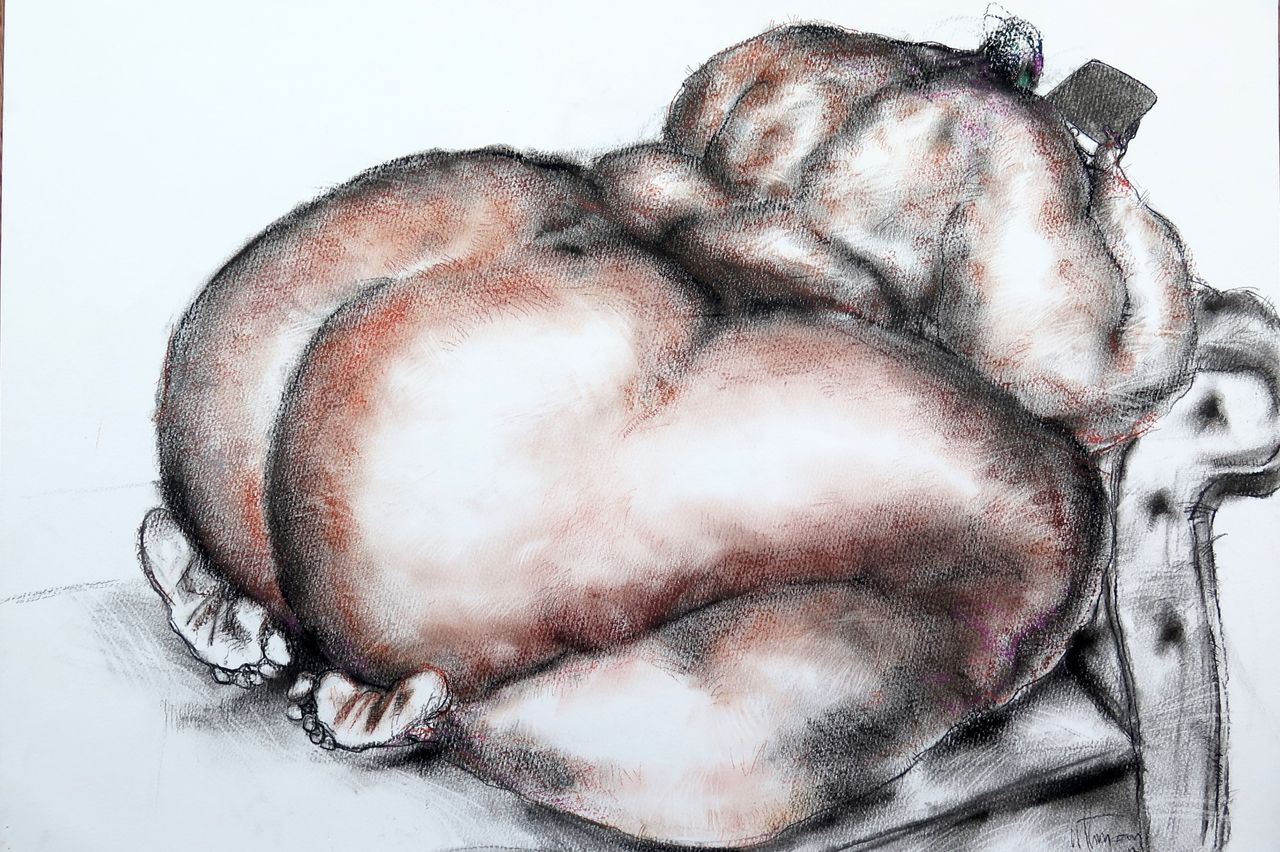
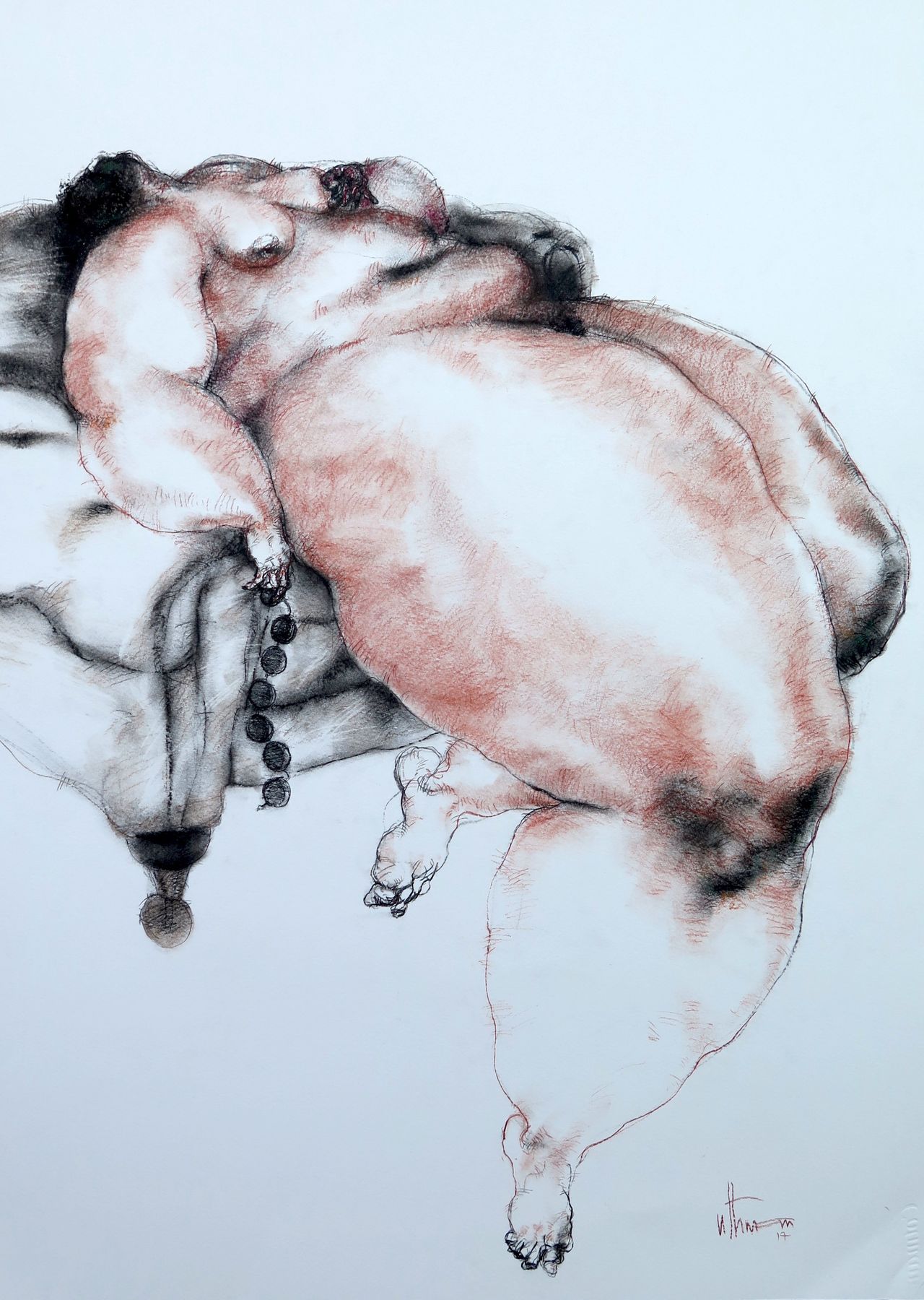
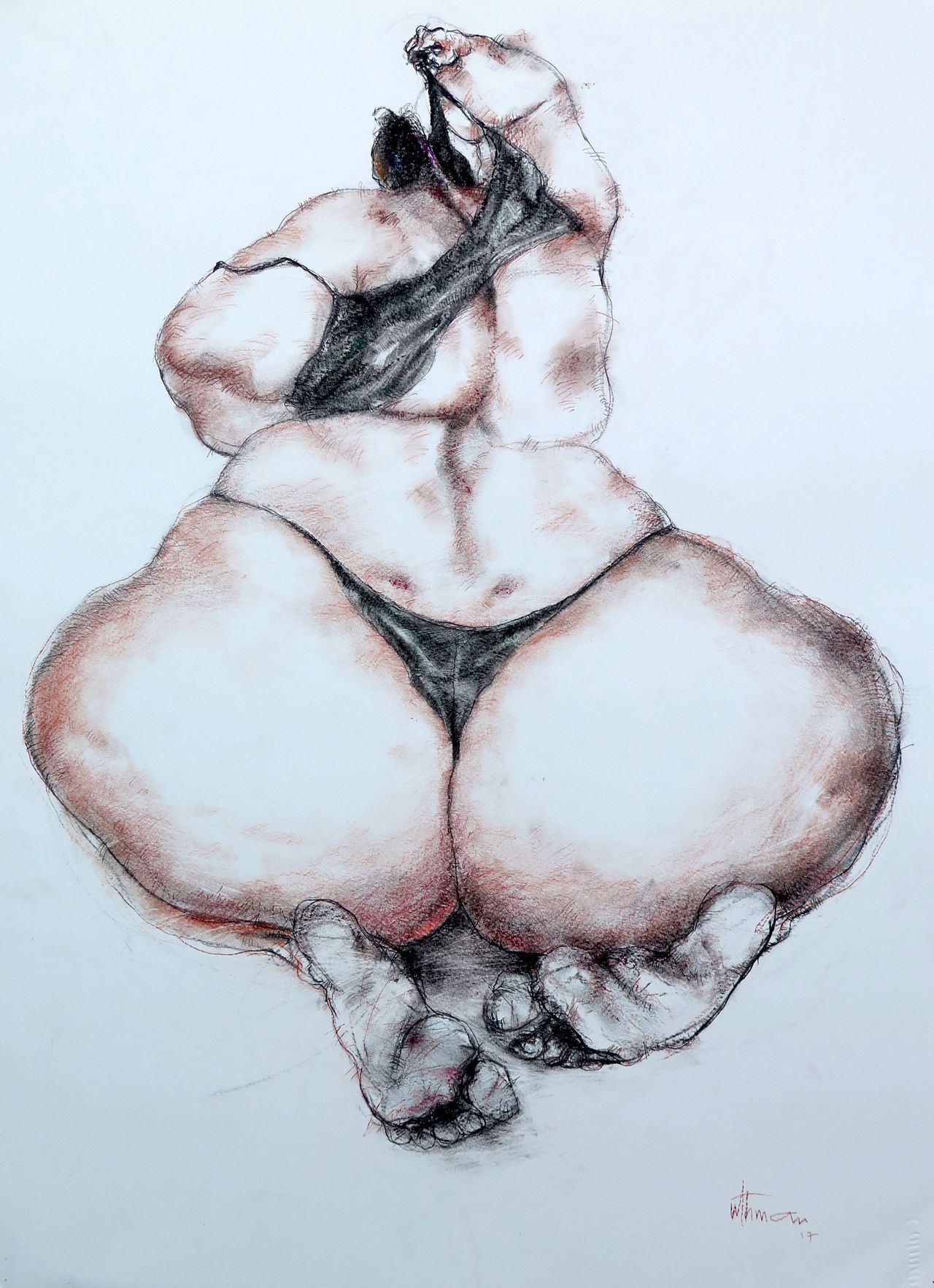
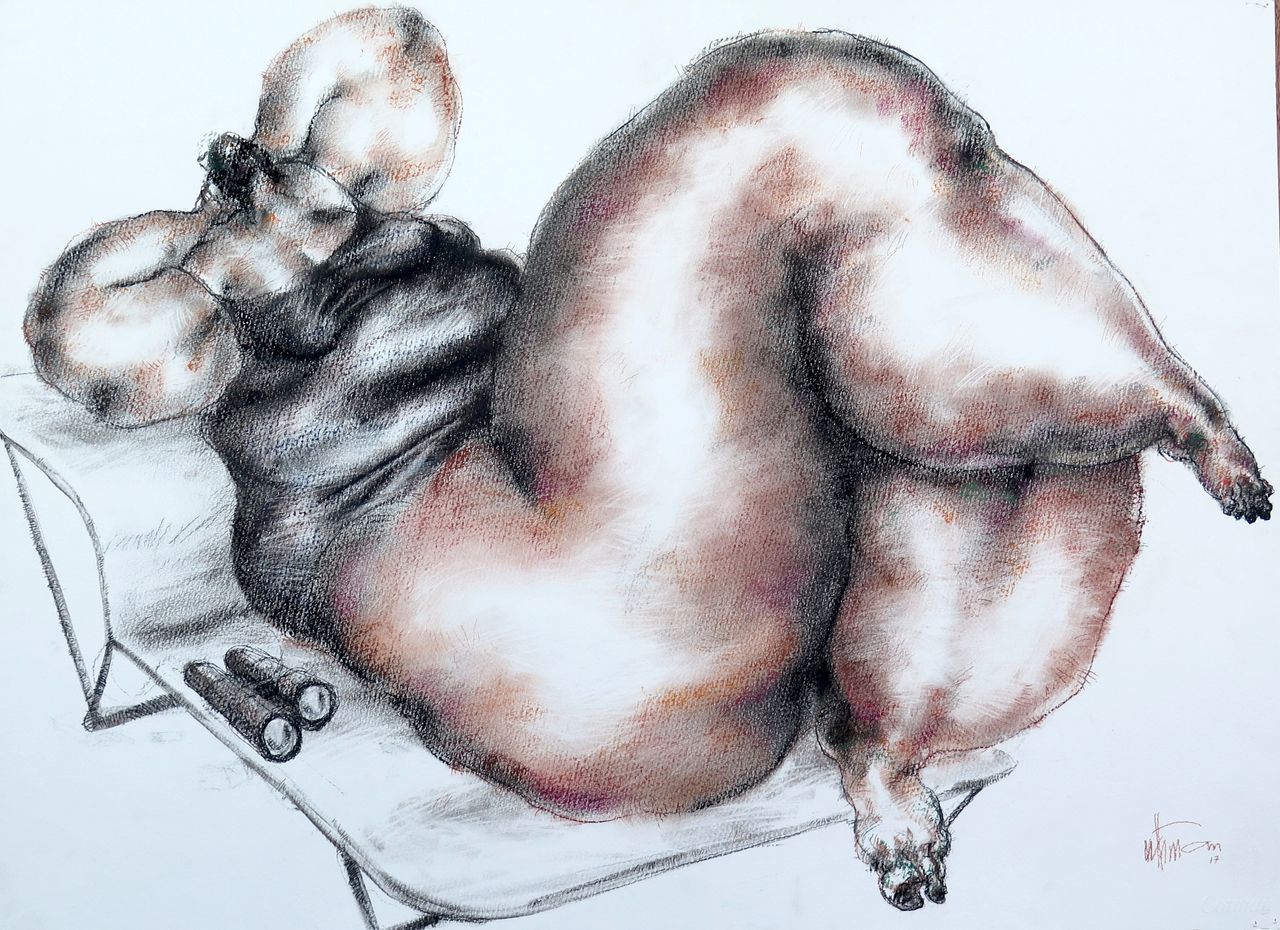
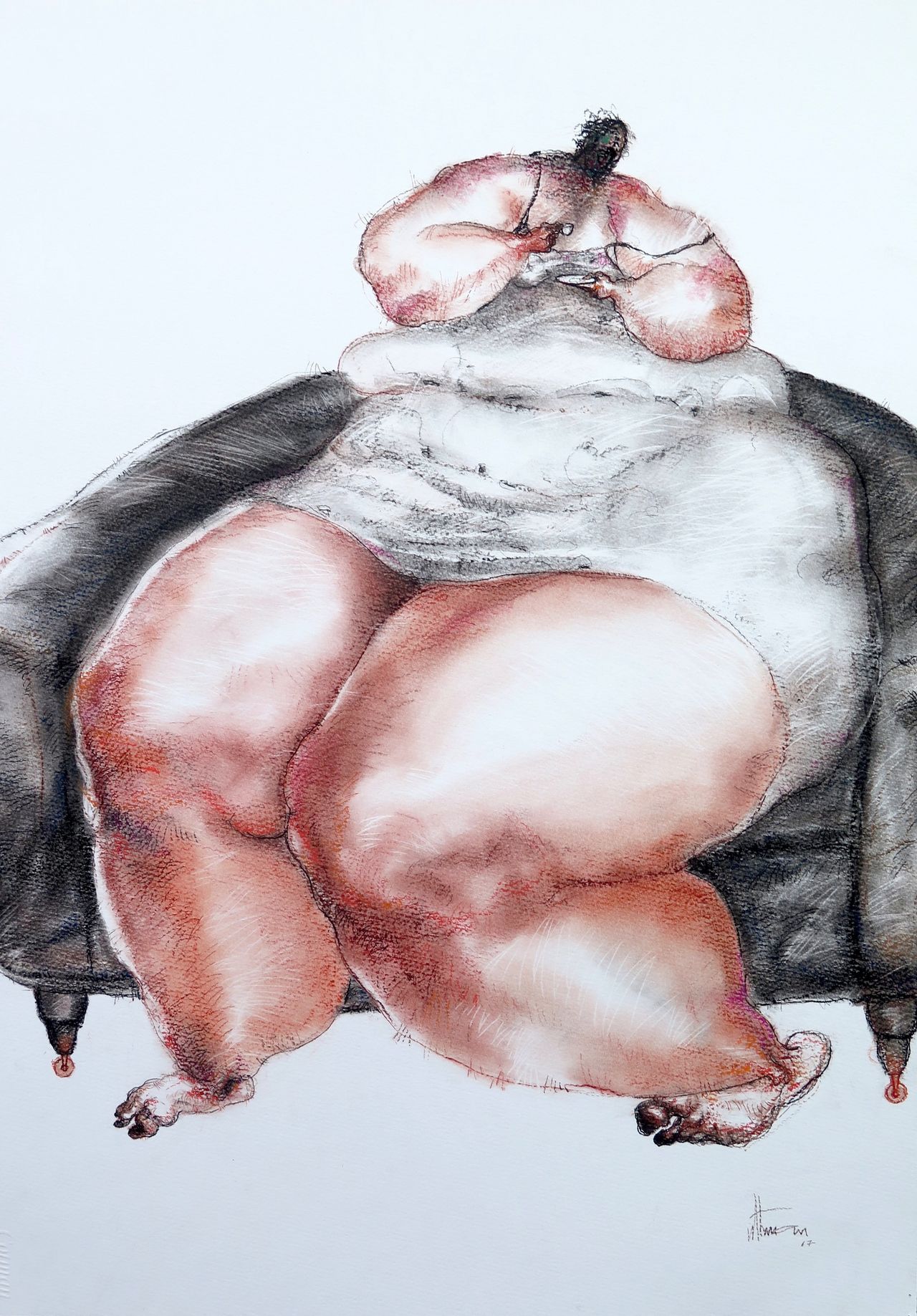
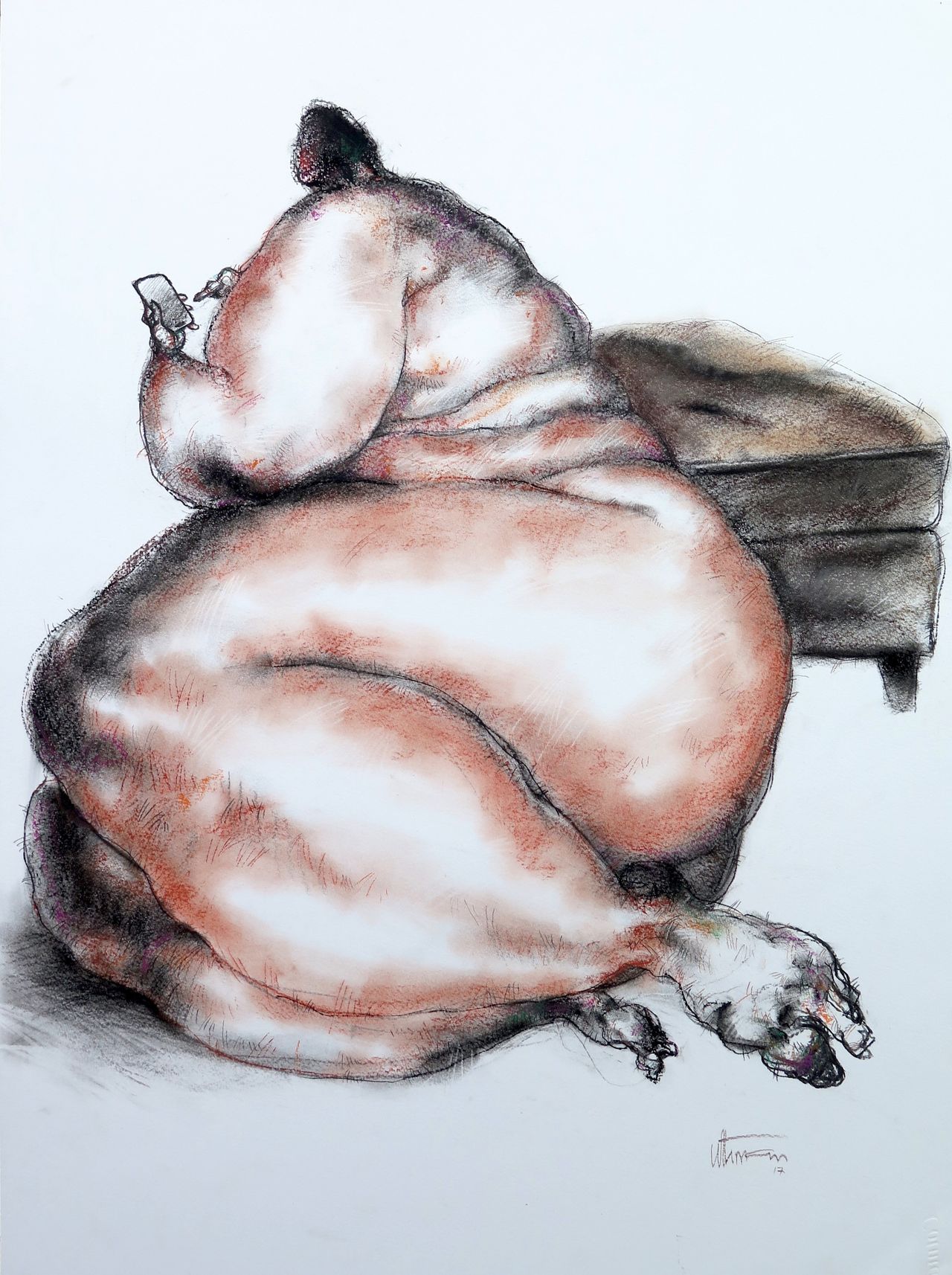

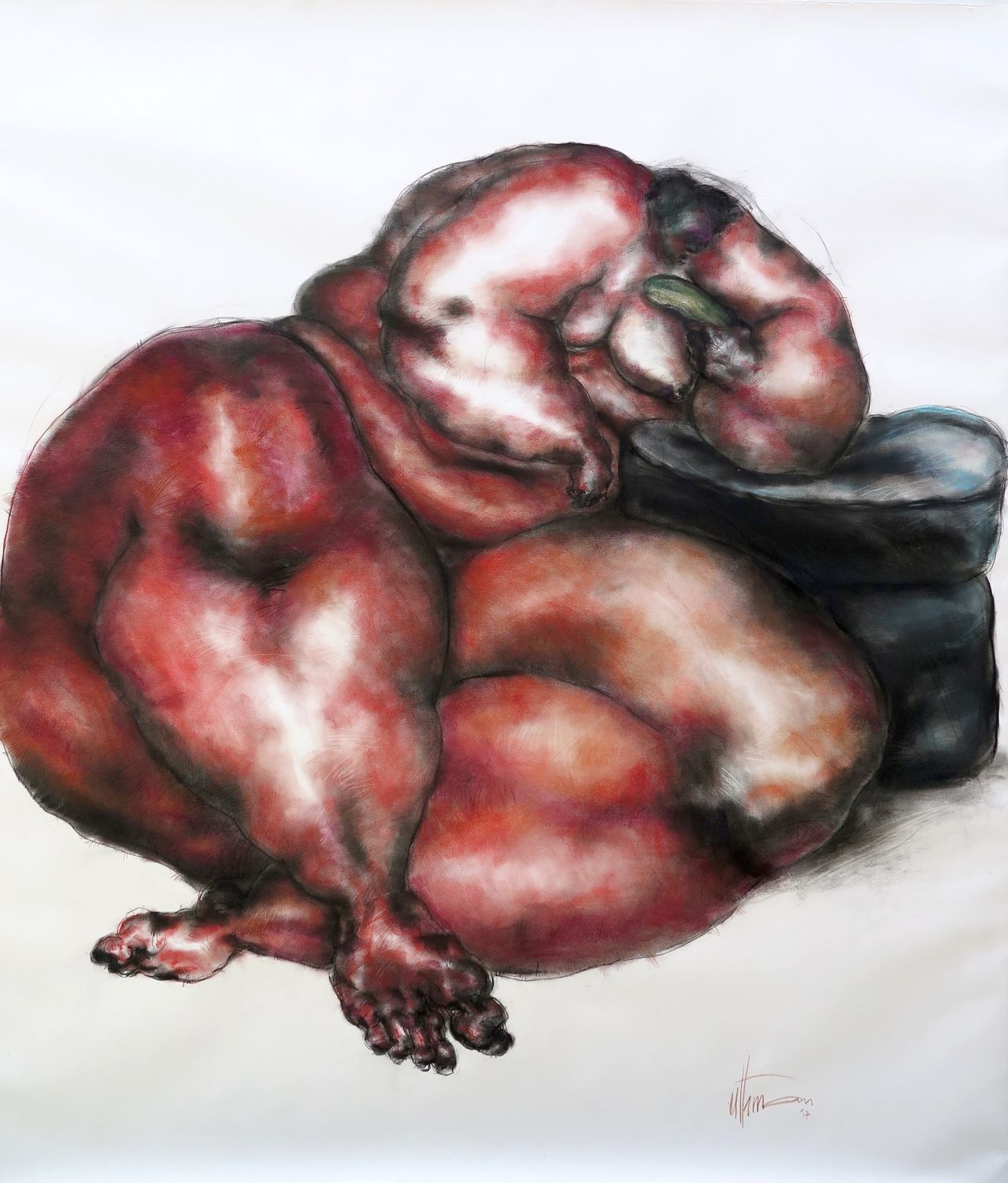
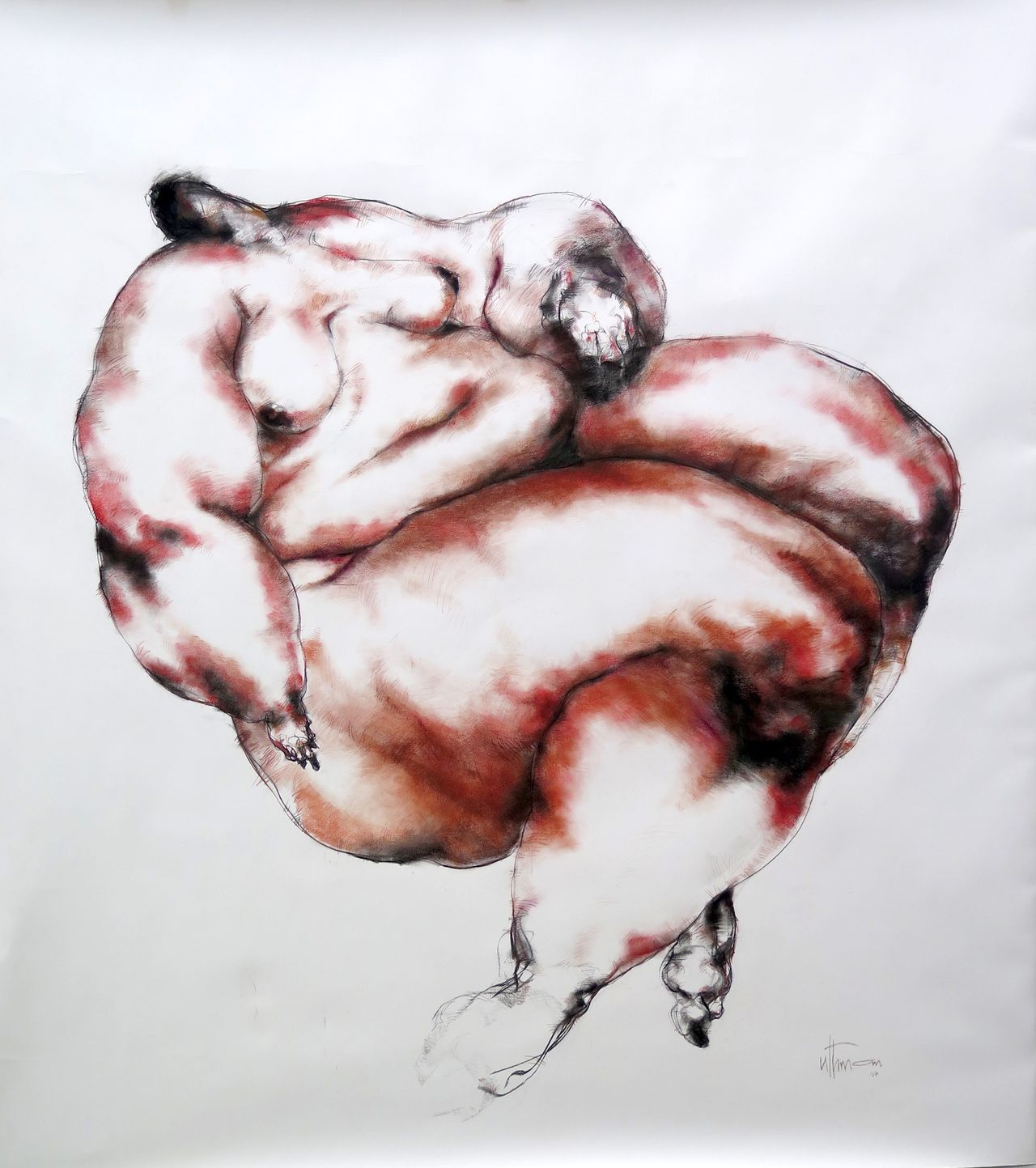
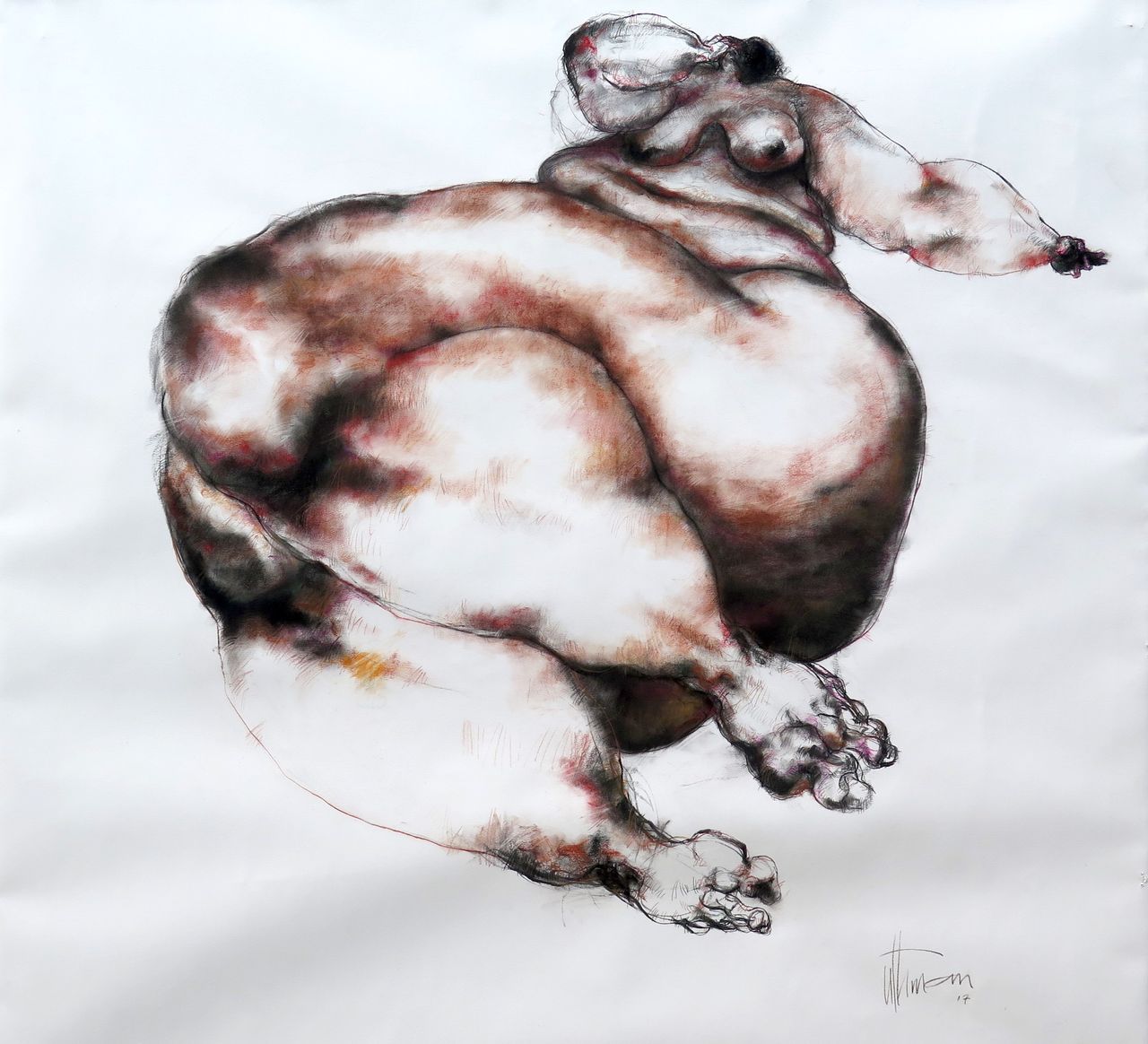

Uthman Wahaab’s “Phenomenal Woman” is on view until September 20 at Sapar Contemporary in New York.
Correction: An earlier edition of this article misstated Hiba Schahbaz was from the Middle East; she is from Pakistan.
